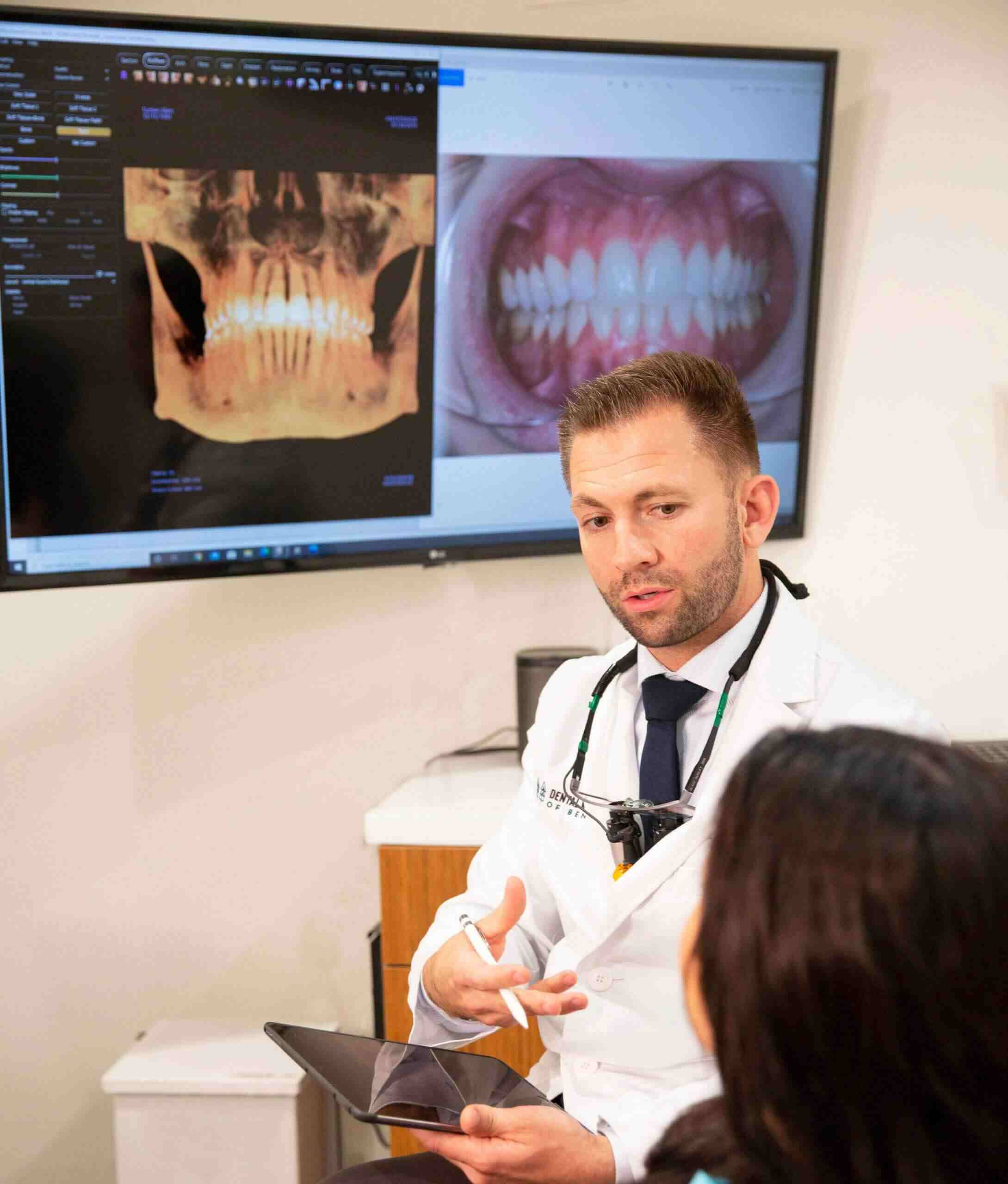
Full Mouth Restorations
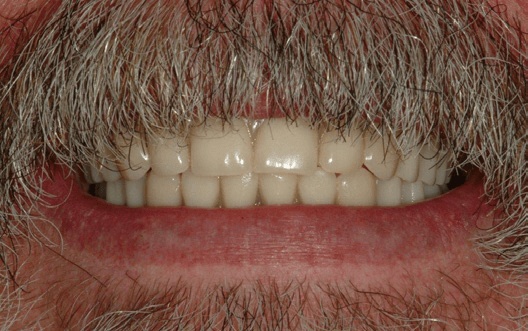
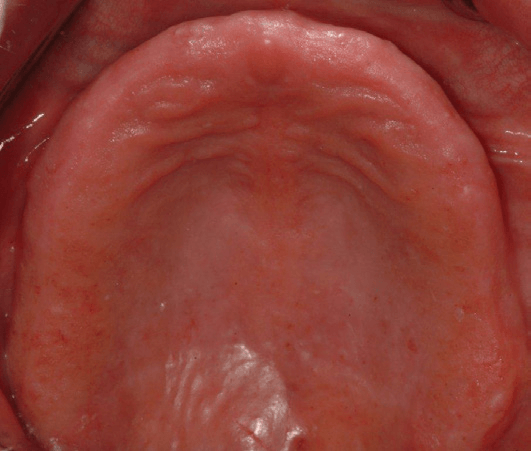
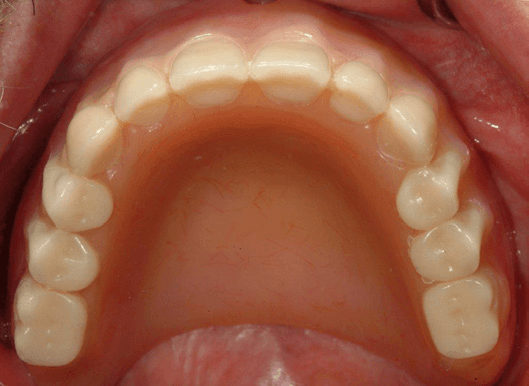
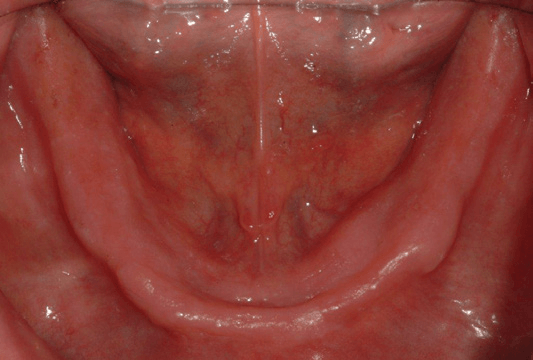
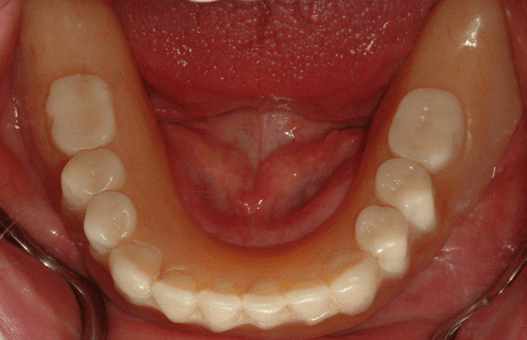
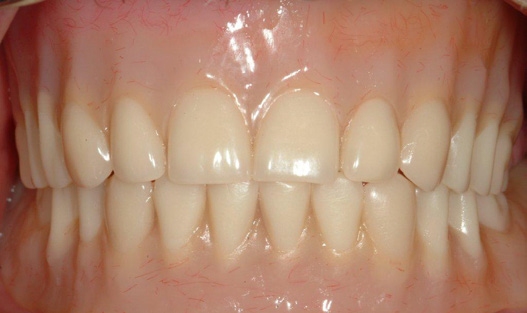
Restores appearance and function
What materials are in a Complete Denture?
The base of a complete denture is made of pink acrylic. The teeth are made of tooth-colored acrylic or porcelain which attach to the base.
What are the benefits of a Complete Denture?
A complete denture restores function and appearance to a jaw with no teeth. It is the most cost-effective way of replacing all the teeth in one jaw. A complete denture can also provide important support to facial structures such as the lips, helping to maintain a more youthful appearance.
What are the risks of a Complete Denture?
A complete denture, even under the best of circumstances, DOES NOT have the same chewing efficiency as natural teeth. The ability to chew food depends on the stability, support, and retention of the denture. Stability, support, and retention are affected by many factors, including the amount and type of bone, gums, and saliva present in the patient’s mouth as well as the shape of the patient’s jaw and how it fits with the opposing teeth.
What are the alternatives to a Complete Denture?
The alternatives to having a complete denture are:
1. Implants which attach to:
b. Crowns or bridges
c. A complete denture
2. Leave your mouth as it is
How can an existing bite affect a Complete Denture?
Uneven or excessive bite forces may cause wear or fracture of the denture teeth or denture base. Chewing will make a complete denture rock slightly in the mouth; the more uneven the biting force, the more the complete denture will rock.
Are there any post-treatment limitations once I have a Complete Denture?
To keep the tissue under the appliance healthy, your denture should be left out of your mouth during sleep. The teeth in the denture are not as strong as your natural teeth and you will not be able to chew as heavily on them. The appliance will tend to get food trapped underneath it and you may have to remove and clean it after eating. The fit between a complete denture and the gums is very important for retention, and therefore must be re-established every 2-5 years as gums are constantly undergoing small changes.
An implant assisted prosthesis with locator attachments replaces all the teeth in a jaw. The locators attach the prosthesis to dental implants that have been previously placed in the jawbone. Usually 2 implants plus attachments are used in the lower jaw, and 4 in the upper jaw. The prosthesis is not fixed in the mouth, and is designed to be removed by the patient for oral hygiene purposes.
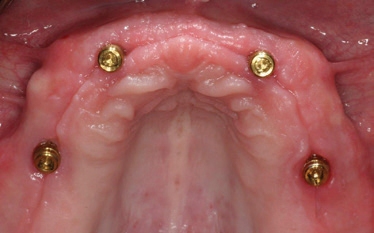
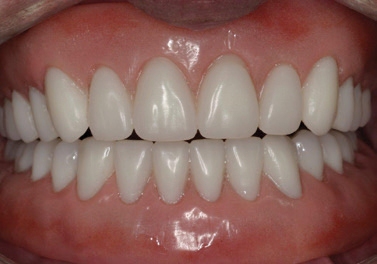
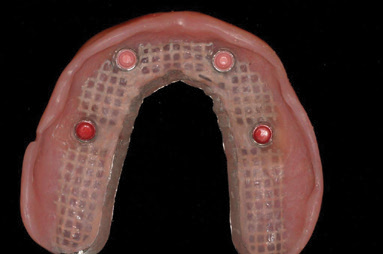
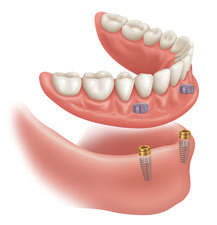
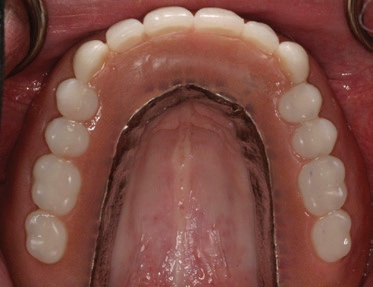
How would I benefit from an implant assisted prosthesis with locator attachments?
- An implant assisted prosthesis with locator attachments will have greater retention, chewing ability, and less bone shrinkage, compared to a traditional complete denture.
- If I have a dry mouth, the difficulty with the retention and comfort of a traditional complete denture that I may be experiencing will be reduced.
- My lip will be better supported compared to an implant-supported fixed bridge.
- The ability to remove the prosthesis makes cleaning easier, as well as any repairs should they be necessary.
- The lack of a palate greatly improves my sense of taste and texture of food.
What are my risks of an implant assisted prosthesis with locator attachments?
- If I have limited space in my mouth, the acrylic in the prosthesis covering the locator attachments may be thin and will tend to chip.
- If after eating food gets trapped under the prosthesis, I will have to remove it to clean.
- The prosthesis is not solidly attached and will tend to move up and down. If my tissue is fragile this may cause sore spots.
- The prosthesis still rests on my gum tissue, which can cause shrinkage of my jawbone, except in the areas where the implants are placed.
- While my ability to chew is better than a traditional complete denture, it will not be as strong as teeth connected directly to implants.
- The possible failure of an implant may necessitate its replacement and subsequent modification of the prosthesis.
What are my alternatives to an implant assisted prosthesis with locator attachments?
- Leaving my mouth as it is, or a traditional complete denture.
- An implant supported prosthesis with a bar attachment.
- An implant supported prosthesis with locator attachments on a bar attachment.
- An implant supported fixed bridge.
What materials are in an implant assisted prosthesis with locator attachments?
- The base of the prosthesis is made of pink acrylic.
- The teeth are made of tooth colored acrylic or porcelain.
- Locator attachments are plastic, and the implants they attach to are made of titanium.
Are there any post-treatment limitations once I have an implant assisted prosthesis with locator attachments?
- The locator attachments will wear over a period of time and need replacing.
- Oral hygiene is essential, and the prosthesis may need to be removed at night to improve the health of the tissues and longevity of the locators.
Patient Feedback
EXCELLENTTrustindex verifies that the original source of the review is Google. Great staff and care at Bend Dental Wellness!Trustindex verifies that the original source of the review is Google. We have been going here for 5 years. We really enjoy how kind all of the staff are. Up to date modern tools.Trustindex verifies that the original source of the review is Google. I had an emergency and they found a way to get me in to be seen the same day. The staff and Dr Quigley were helpful and professional. I’ve been going to Bend Dental Wellness for four years and it has always been professional and friendly.Trustindex verifies that the original source of the review is Google. Dr. Blake Q and his staff are very friendly and competent. I did choose this practice because of his 'better' practices with dental care. And I've been very satisfied with my dental care for the past 3+years and will continue. Had a cleaning today with Mara and she was very gentle and thorough.Trustindex verifies that the original source of the review is Google. The service was excellent, both my teeth cleaning and discussion of possible future needs.
Request An Appointment
Need help? Contact us!





